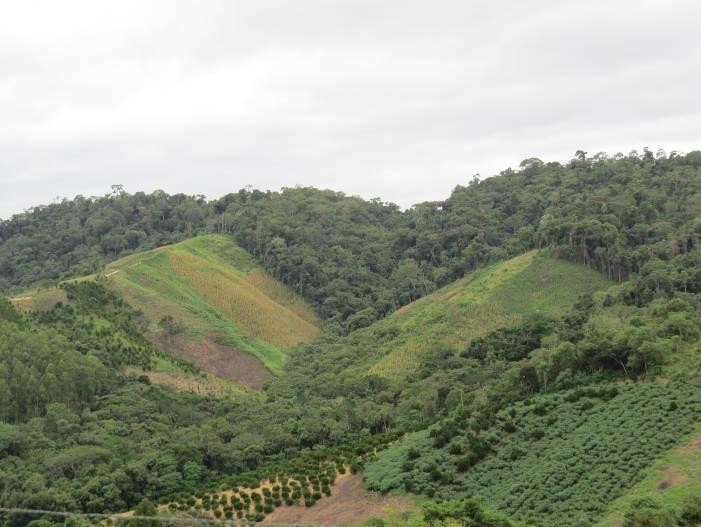Bianca Ingberman
The main objective is to access the southern muriqui current conservation status in the State of Paraná and indicate priority areas for its conservation.
The muriqui is the largest of the New World primates, and a flagship for the conservation of the Atlantic Forest in Brazil. They are endemic to this biome, which itself is threatened due to deforestation, with now only 8% remaining, scattered among innumerable fragments of different sizes. It’s recognized two species of muriqui, the northern muriqui and the southern muriqui. The southern muriqui is threatened from habitat loss and hunting being classified as “Endangered” in IUCN red list. Its south limit of distribution is in the State of Paraná (Southern Brazil) where it is classified as “Critically Endangered” in the regional red list.

Landscape.
Very little is known about the southern muriqui in its south limit of distribution. Thus the main contribution of this study is to access the current conservation status of the southern muriqui in the state of Paraná as the first step in developing strategies for the conservation of the species in the long term. The specific aims are: (1) estimating its actual occupancy probability; (2) aiding to identify the environmental variables that best explain the presence of the species; and (3) indicate the priority areas for conservation of this species in the study area. To achieve my goals, I will survey 60 study sites (randomly selected 10,000 ha square cell in a grid over the whole study area) interviewing three to ten local residents about the presence/absence of the specie and I will measure environmental variables (fragment size, forest cover and surrounding land-use) inside each square cell of the grid.
The current occupancy probability of the southern muriqui in Paraná State will be measured by estimating its occupancy rate from the probability of detection of the species and analysed by the Software PRESENCE to estimate the proportion of sites occupied by the specie. By modelling with the same software a map with the current distribution of occupancy probability of the southern muriqui will be produced and the environmental variables that better explain the presence of the species will be ranked by Akaike´s criteria. These results are key information to perform any act aimed at the conservation of the southern muriqui in the state of Paraná. Therefore, the communication of these results will be both in the academic as well as to the decision makers in order to guide further studies or actions to promote long-term conservation of this species.